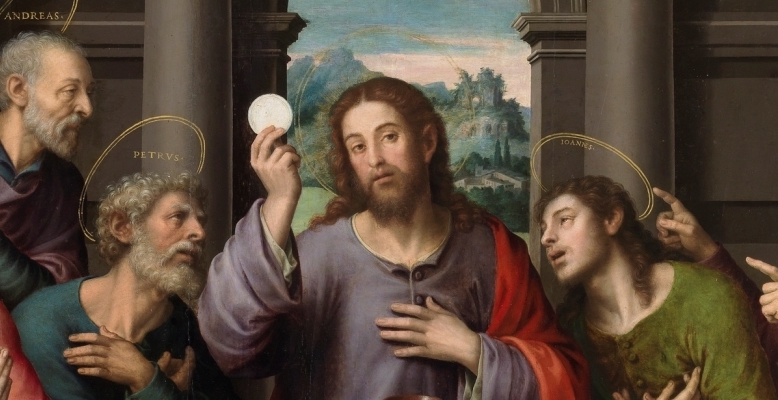Returning to our series on lectio divina, we arrive at the final step, contemplation (contemplatio).
[featured-image single_newwindow=”false”]
Thus far we have read (lectio) the passage of scripture, meditated (meditatio) on it, and prayed (oratio) to God, relating everything back to Him. It is now our duty to rest in the presence of God and simply absorb the moment.
This is how Father Luke Dysinger, OSB, describes it:
“Rest in God’s embrace. And when he invites you to return to your contemplation of his word or to your inner dialogue with him, do so. Learn to use words when words are helpful, and to let go of words when they no longer are necessary. Rejoice in the knowledge that God is with you in both words and silence, in spiritual activity and inner receptivity.
Sometimes in lectio divina, you may return several times to the printed text, either to savor the literary context of the word or phrase that God has given or to seek a new word or phrase to ponder. At other times, only a single word or phrase will fill the whole time set aside for lectio divina. It is not necessary to assess anxiously the quality of your lectio divina, as if you were “performing” or seeking some goal. Lectio divina has no goal other than that of being in the presence of God by praying the Scriptures.”
Contemplation gives you the opportunity to reap the fruits of your labors. The entire process of lectio divina is described in a similar way by Tim Gray, “Like gardening, prayer takes planting, tending, and harvest before we taste the fruits of our labors” (Praying Scripture for a Change).
The first few steps of lectio divina are arduous and require much effort on our part. However, once we get to the step of contemplation, form passes away and we are allowed to sit and rest in the arms of God.
The Catechism further elaborates on the beauty and nature of contemplation:
“2715 Contemplation is a gaze of faith, fixed on Jesus. ‘I look at him and he looks at me’: this is what a certain peasant of Ars in the time of his holy curé used to say while praying before the tabernacle. This focus on Jesus is a renunciation of self. His gaze purifies our heart; the light of the countenance of Jesus illumines the eyes of our heart and teaches us to see everything in the light of his truth and his compassion for all men. Contemplation also turns its gaze on the mysteries of the life of Christ. Thus it learns the ‘interior knowledge of our Lord,’ the more to love him and follow him.”
One could say that the goal of contemplation is to arrive at a deeper love of God and a recognition of His presence in our lives.
For those struggling with this last and final step, try this: quiet your mind and breathe slowly. Then, picture Jesus sitting right in front of you. Notice His gaze. What is He looking at? Can you see His eyes? Rest in His gaze.
Contemplation can be best summed up by the peasant of Ars, “I look at Him and He looks at me.”
That concludes our series on lectio divina. Stay tuned for a new series on prayer that I will start on Friday.
Read the Entire Series:
- The Third Step of Lectio Divina: Returning Everything Back to God
- The Second Step of Lectio Divina: Christian Meditation
- The First Step of Lectio Divina: Slow Down!
- What is Lectio Divina and Why Bother?
- Breathe Life into the Divine Office with C.S. Lewis’ Reflections on the Psalms
- An Introduction to the Four Volume Breviary
- Beginner’s Guide to Praying the Liturgy of the Hours
- Physical Breviary vs. iBreviary: How is a Person to Pray?
- The Digital Breviary: A Guide to Praying the Divine Office in a Digital World
- 5 Reasons to Pray the Divine Office Daily
- 5 Practical Ways to Prepare for Mass
- How to Actively Participate in Mass
- 3 Ways to Imitate Jesus’ Vocal Prayer
- How to Pray Like Jesus: The Ultimate Checklist

